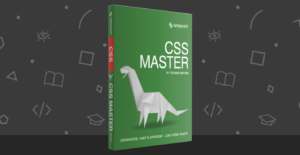Sell Like a Yellow Pages Rep, Part 1
Key Takeaways
- Successful selling involves focusing on solutions and outcomes, rather than just the product. This is critical in the transition from print to digital media, where the aim remains to connect buyers to sellers.
- Preparation is key to successful selling. Understanding the prospect’s needs and having a range of options ready to offer is crucial. This applies to both print and digital offerings.
- Prospecting, asking the right questions, and demonstrating value are also important parts of the sales process. The goal is to convince the prospect that their investment will yield a return and that you are the best option among the available choices.
Last week, I wrote about how web designers can transition to print. Here’s how to sell digital media like a print rep.
Selling Yellow Pages is challenging. Those who don’t leave for greener pastures eventually “bleed yellow”—meaning, once it’s in your system, no other job will satisfy. A few years ago, it was rumored that Google was looking to buy a Yellow Pages company because they wanted to acquire a street-savvy sales force, and Yellow Pages reps are among the best of the best.
Yet, many who have sold print advertising for years are struggling when it comes to digital products.
The disconnect occurs when you fixate on that last word: products. Successful selling means knowing your product, but that’s a small percentage of the skill required. Reps confuse themselves when they think they’re selling products instead of solutions or outcomes.
Print reps who can’t sell digital have forgotten what business owners actually want—customers. For the past 120 years, Yellow Pages advertising has connected buyers to sellers, by targeting a particular typer of consumer—one that’s looking for a seller. Today, that connection is taking place online as well.
So be it “old media” or new, Yellow Pages, search engine optimization, pay-per-click advertising—even social media—connects buyers to sellers.
Once you see the big picture perspective, selling like a Yellow Pages rep is easy—once you know how they do it, that is.
Be Prepared
Both Winston Churchill and Ben Franklin agree: He who fails to plan, plans to fail. A good rep finds out as much as possible about a prospect before setting foot inside the door—as well as how much or how little marketing they’re doing.
A good rep also knows he must have something prepared ahead of time to offer. Selling Yellow Pages advertising involves having three options ready: a dominant program, a competitive program and a representative program.
It works like this. If you never pitch a double-truck ad (a two-page spread), you’ll never sell a full-page ad. If you start with the full-page, you might sell a half-page. But if you present the half-page first, what will you end up with? The same applies to digital offerings.
When I started my web business, there wasn’t much to offer besides a website and SEO. Today, the digital buffet table has a much larger selection to choose from—mobile web design, social media, reputation marketing. As I’ve said before, consider moving beyond your particular expertise by becoming someone who consults with clients on all levels of marketing. I prefer to be paid for my knowledge and expertise rather than knowing the right buttons to push on a keyboard. But that’s just me.
Prospect, Prospect, Prospect
In order to set appointments, make presentations, and close enough sales to earn a living, you must generate conversations with a sufficient number of people in your target audience. This may mean attending networking meetings, cold-calling, and other prospecting methods.
Prospecting is an acquired skill—one that you must master if you want succeed at selling your services and avoid becoming a statistic.
Get the Facts
How can you have a sense of what your client needs without asking the right questions? Remember, prescription without diagnosis is malpractice.
Not sure what to ask? Get my free guide, 27.5 Must-Ask Questions for Consultative Selling, by following me on Facebook or Twitter.
Show the Value
Return on investment isn’t the only value driver, but it’s an important one. Your prospect must be convinced he’ll make more than he spends; otherwise the conversation is not likely to go much further.
Besides persuading the client he’ll achieve results, you must also must convince him that the return on investment is worth the risk, and that you are the best choice among the
available options.
That’s according to a report published by RAIN Group, What Sales Winners Do Differently. Sellers who not only connect and collaborate, but convince win the sale and put themselves in a position to win future sales.
… in our research, the winners convinced, and they convinced with gusto.
Even Google Agrees
Google’s new Partners program “resolves to help even more agencies succeed,” by providing free training, guidance and support.
That includes training videos on how to sell pay-per-click advertising using … guess what? The exact steps outlined above (and in Part 2, next week).
Coincidence? I think not.
Frequently Asked Questions about Selling Like a Yellow Pages Rep
What are the key strategies used by Yellow Pages representatives to sell their services?
Yellow Pages representatives employ a variety of strategies to sell their services. They focus on building strong relationships with their clients, understanding their needs, and providing tailored solutions. They also use persuasive sales techniques, such as demonstrating the value and benefits of their services, offering competitive pricing, and providing excellent customer service. Additionally, they leverage their extensive knowledge of the market and their products to convince potential clients to choose their services.
How can I apply the strategies used by Yellow Pages representatives in my own business?
You can apply the strategies used by Yellow Pages representatives in your own business by focusing on building strong relationships with your clients, understanding their needs, and providing tailored solutions. You can also use persuasive sales techniques, such as demonstrating the value and benefits of your products or services, offering competitive pricing, and providing excellent customer service. Additionally, you can leverage your knowledge of the market and your products to convince potential clients to choose your services.
What are the benefits of using Yellow Pages for advertising?
Yellow Pages offers several benefits for advertising. It provides a platform for businesses to reach a wide audience, including potential customers who are actively looking for specific products or services. It also offers various advertising options, such as online listings, print ads, and digital marketing services, allowing businesses to choose the most suitable option for their needs. Additionally, Yellow Pages provides detailed analytics and reporting, helping businesses track their advertising performance and make informed decisions.
How effective is Yellow Pages in driving sales?
Yellow Pages can be very effective in driving sales, especially for local businesses. It allows businesses to reach potential customers who are actively looking for specific products or services, increasing the chances of generating leads and sales. Additionally, Yellow Pages offers various advertising options and provides detailed analytics and reporting, helping businesses optimize their advertising strategies and improve their sales performance.
What are the challenges of selling like a Yellow Pages representative?
Selling like a Yellow Pages representative can be challenging, especially in a competitive market. It requires strong sales skills, including the ability to build relationships, understand client needs, and provide tailored solutions. It also requires extensive knowledge of the market and the products or services being sold. Additionally, it involves dealing with various challenges, such as handling objections, overcoming competition, and meeting sales targets.
How can I overcome the challenges of selling like a Yellow Pages representative?
You can overcome the challenges of selling like a Yellow Pages representative by improving your sales skills, gaining a deep understanding of your market and your products or services, and developing effective sales strategies. You can also seek advice and guidance from experienced sales professionals, attend sales training programs, and continuously learn and adapt to changes in the market.
How can I improve my sales performance like a Yellow Pages representative?
You can improve your sales performance like a Yellow Pages representative by focusing on building strong relationships with your clients, understanding their needs, and providing tailored solutions. You can also use persuasive sales techniques, leverage your knowledge of the market and your products, and continuously monitor and optimize your sales strategies based on performance data and feedback.
What are the key skills required to sell like a Yellow Pages representative?
Selling like a Yellow Pages representative requires a variety of skills, including strong sales skills, excellent communication and relationship-building skills, the ability to understand client needs and provide tailored solutions, and a deep knowledge of the market and the products or services being sold. It also requires resilience, adaptability, and a results-driven mindset.
How can I develop the skills required to sell like a Yellow Pages representative?
You can develop the skills required to sell like a Yellow Pages representative by gaining practical sales experience, attending sales training programs, and learning from experienced sales professionals. You can also improve your communication and relationship-building skills, gain a deep understanding of your market and your products or services, and develop resilience and adaptability through continuous learning and practice.
How can I measure the success of my sales efforts like a Yellow Pages representative?
You can measure the success of your sales efforts like a Yellow Pages representative by tracking key performance indicators (KPIs), such as the number of leads generated, the conversion rate, the average deal size, and the customer retention rate. You can also use customer feedback and reviews to assess the quality of your sales service and identify areas for improvement.
Former owner and partner of web firm Jenesis Technologies, John is currently Director of Digital Strategy at Haines Local Search, a company providing local search marketing solutions to SMBs, including print and Internet Yellow Pages, web design, and local SEO. When not working or spending time with his family, John offers great sales and marketing advice on his blog, Small Business Marketing Sucks. When not working or spending time with his family, John offers great sales and marketing advice on his blog, Small Business Marketing Sucks.
Published in
·Business·Career Advancement·Entrepreneur·Entrepreneurship·Entrepreneurship·Freelancing·Marketing·Revenue·September 14, 2015
Published in
·Business·Entrepreneur·Entrepreneurship·Entrepreneurship·Freelancing·Revenue·Web·July 16, 2015
Published in
·Business·Content Marketing·Entrepreneurship·Freelancing·Marketing·SEO & SEM·December 31, 2013


